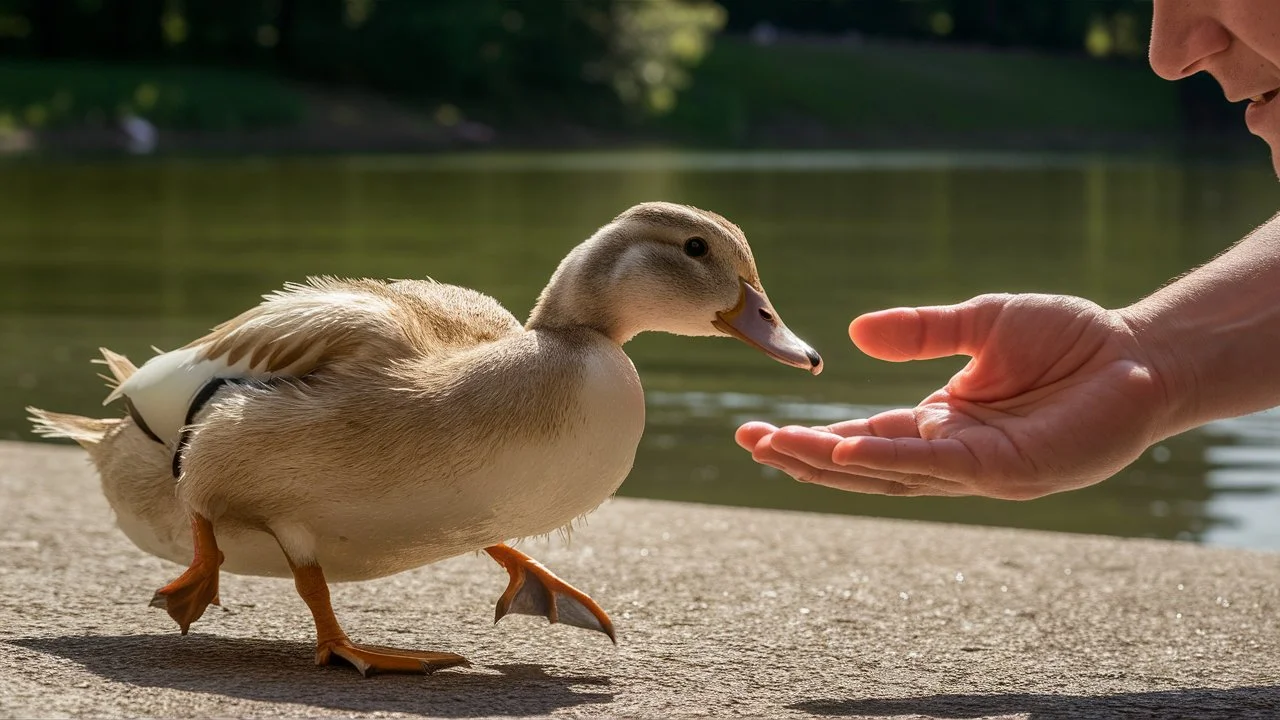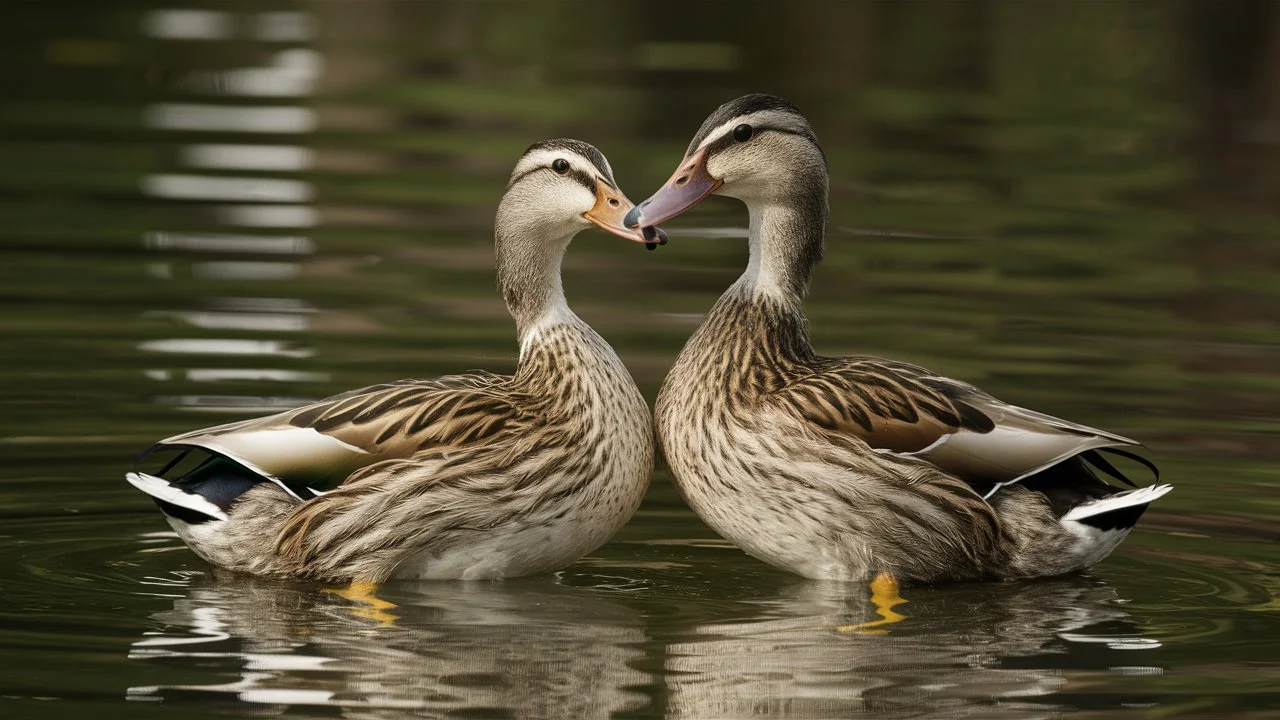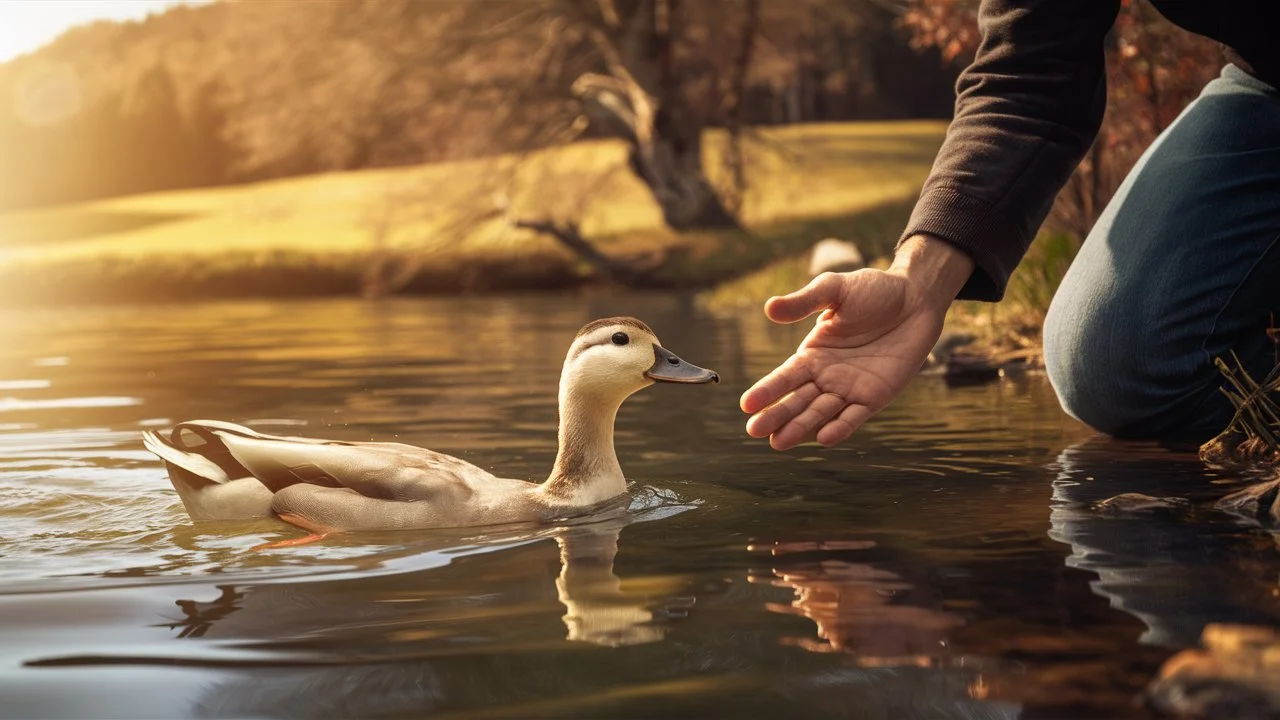Ducks are wonderful birds that live in many places around the world. They are known for their friendly nature and unique ways of showing affection. When ducks like someone or something, they have special ways to show it. They might make soft quacking sounds, wag their tails, or gently nibble at you. Sometimes, they even follow you around or sit close to you. By watching these simple actions, you can understand how much ducks care for those they love.
Ducks show affection in several simple ways. They make soft quacking sounds, wag their tails, and gently nibble at you. Ducks may also follow you around and sit close to you. These actions show that they like and trust you.
Table of Contents
ToggleHow Ducks Show Affection to Humans
Ducks have several ways of showing affection to humans. Here are some detailed signs that indicate a duck likes you:
Soft Quacking
Ducks make gentle quacking sounds when they feel happy and safe. These soft quacks are their way of communicating and expressing comfort. If a duck quacks softly around you, it means they are content and enjoy your company.
Tail Wagging
Just like dogs, ducks wag their tails when they are excited or happy. This tail-wagging is a clear sign of joy and affection. If a duck wags its tail when it sees you, it is showing that it likes you and is pleased to be near you.
Gentle Nibbling
Ducks may gently nibble at your fingers, clothes, or even your hair. This nibbling is a friendly gesture and indicates trust. It’s their way of exploring and interacting with you in a gentle and affectionate manner.
Following You
When a duck follows you around, it means they enjoy your company and see you as a friend. Ducks often follow those they trust and like. This behavior shows that they feel secure with you and want to stay close.
Sitting Close
Ducks like to sit near those they care about. If a duck chooses to sit close to you, it’s a clear sign that they feel safe and happy with you. They may even nestle up against you or rest their head on you, demonstrating a deep level of trust and affection.
By observing these behaviors, you can understand how ducks show their affection and recognize the special bond you share with them. Ducks express their feelings in simple yet meaningful ways, making them wonderful and loving companions.
Related reading:Do Ducks Mate for Life?

Do Ducks Bite to Show Affection?
Yes, ducks may gently nibble or bite to show affection. Here’s a detailed explanation:
Gentle Nibbling or Biting
When ducks are comfortable and trustful around humans, they often use gentle nibbling or biting as a way to interact. This behavior is similar to how they explore their environment and communicate with other ducks.
- Exploring and Playfulness: Ducks use their beaks to explore, much like how we use our hands. When they gently nibble or bite your fingers, clothes, or hair, they are often being playful and curious. This is a sign that they feel safe and comfortable with you.
- Affection and Bonding: Gentle nibbling is also a way for ducks to show affection. It’s their way of bonding with you and expressing that they enjoy your presence. If a duck nibbles you softly, it’s usually a positive sign of affection and trust.
Understanding the Context
It’s important to understand the context of the biting. Here are a few tips:
- Gentle vs. Aggressive: Gentle nibbling or biting should not be painful. If a duck bites hard, it could be a sign of fear, stress, or discomfort rather than affection. Always observe the duck’s overall behavior and body language to understand the context.
- Responding to Nibbling: If the nibbling becomes too frequent or hard, gently discourage it by offering a toy or a treat to redirect their attention. Consistent, gentle handling will help the duck understand appropriate ways to show affection.
In summary, gentle nibbling or biting can be a sign of affection from ducks, showing that they feel safe and bonded with you. However, always be mindful of the duck’s overall behavior to ensure that the biting is indeed affectionate and not a sign of distress.

What Does It Mean When a Duck Vibrates Its Head?
When a duck vibrates its head, it can indicate several things, depending on the context. Here are some common reasons:
Social Interaction
- Communication: Head vibrating can be a form of communication among ducks. They may do this to signal other ducks or as part of their social interactions.
- Mating Behavior: During mating season, male ducks often perform head vibrations as part of their courtship display to attract females.
Excitement or Anticipation
- Feeding Time: Ducks sometimes vibrate their heads when they are excited or anticipating food. This behavior can be observed when you are about to feed them or when they see food coming their way.
- Playfulness: Ducks may also shake or vibrate their heads when they are playful and happy.
Comfort and Grooming
- Preening: Head vibrating can be a part of preening behavior. Ducks shake their heads to adjust their feathers, remove water, or dislodge dirt.
- Comfort: Ducks may vibrate their heads to settle themselves, especially after swimming or when adjusting to their environment.
Health and Wellness
- Checking for Irritants: Sometimes, head shaking can indicate that a duck is trying to dislodge something irritating from its head or beak, such as water, dirt, or parasites.
- Health Issues: Persistent or intense head vibrating without an apparent reason might signal health issues. If you notice unusual or excessive head shaking, it might be worth consulting a veterinarian to ensure there are no underlying health problems.
Duck Behavior with Humans
Ducks can exhibit a variety of behaviors when interacting with humans. Understanding these behaviors can help you build a positive and trusting relationship with them. Here are some common behaviors ducks display around humans:
Friendly and Affectionate Behaviors
- Following You: Ducks that feel comfortable and safe with you may follow you around. This shows they enjoy your company and trust you.
- Soft Quacking: Ducks often make gentle, soft quacking sounds to express contentment or to communicate with you.
- Tail Wagging: Similar to dogs, ducks may wag their tails when they are excited or happy to see you.
- Gentle Nibbling: Ducks might gently nibble on your fingers, clothes, or hair. This is a sign of curiosity and affection, showing that they feel safe around you.
- Sitting Close: Ducks that feel bonded with you may sit close to you, nestle up against you, or rest their heads on you.
Playful Behaviors
- Head Vibrating: Ducks sometimes shake or vibrate their heads in a playful manner, especially when they are excited or anticipating something enjoyable, like feeding time.
- Splashing Water: Ducks love water and might splash around playfully when you are near. They may even invite you to join in their water play.
Comfort and Grooming Behaviors
- Preening: Ducks spend a lot of time preening their feathers to keep them clean and waterproof. They might preen more vigorously around you to show they are comfortable and relaxed.
- Stretching: Ducks often stretch their wings and legs, which is a sign of comfort and well-being.
Signs of Discomfort or Fear
- Hissing: If a duck feels threatened or scared, it may hiss as a warning sign. It’s important to give them space if this happens.
- Rapid Movement Away: Ducks that are frightened or uncomfortable may quickly move away from you. Respect their space and allow them to feel safe.
- Aggressive Pecking: While gentle nibbling is a sign of affection, aggressive pecking can indicate fear, stress, or discomfort. It’s crucial to understand the context and respond appropriately.
Building a Positive Relationship with Ducks
To foster a positive relationship with ducks, consider the following tips:
- Be Patient: Building trust takes time. Be patient and gentle in your interactions.
- Offer Treats: Ducks love treats like peas, corn, or duck pellets. Offering treats can help build a bond.
- Spend Time Near Them: Simply being around ducks without trying to touch or pick them up can help them get used to your presence.
- Move Slowly: Sudden movements can startle ducks. Move slowly and calmly around them.
By understanding and respecting duck behavior, you can develop a rewarding and affectionate relationship with these charming birds.
Conclusion
Ducks have several endearing ways of showing affection to humans. From soft quacking and tail wagging to gentle nibbling and following you around, these behaviors indicate that ducks feel safe and happy in your presence. They may also sit close to you, vibrate their heads in excitement, and engage in playful activities, all of which demonstrate their trust and fondness. Understanding these behaviors helps in building a positive and trusting relationship with ducks, allowing you to appreciate their unique and affectionate nature. By observing and responding to these signs of affection, you can enjoy a rewarding and loving bond with these delightful birds.

